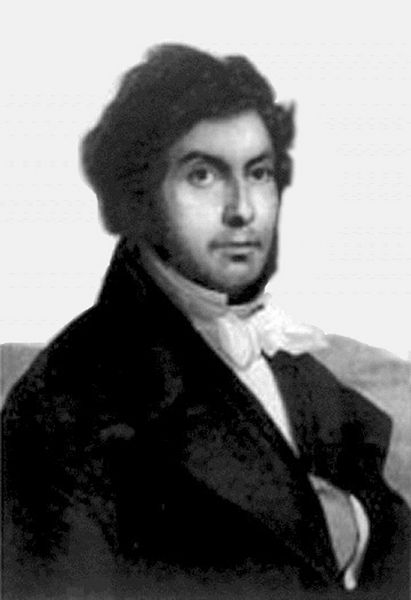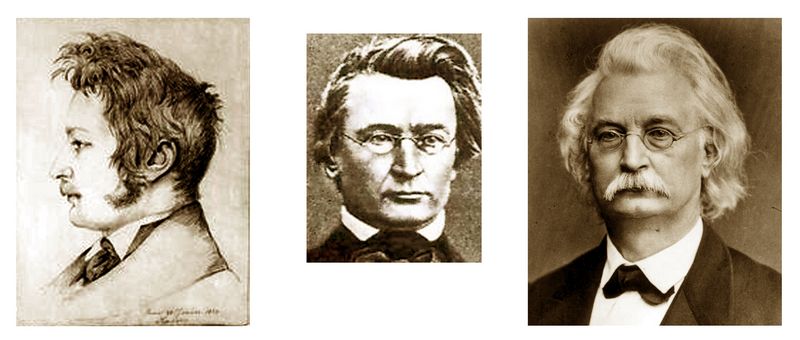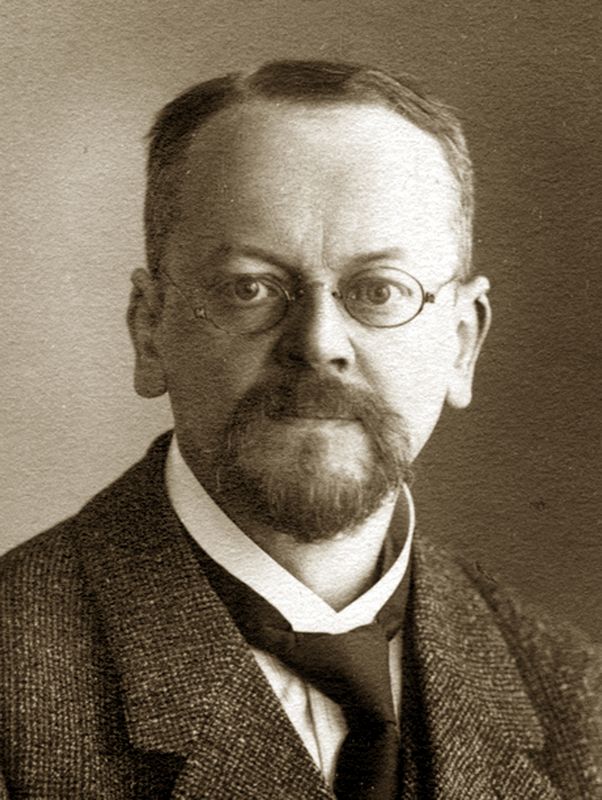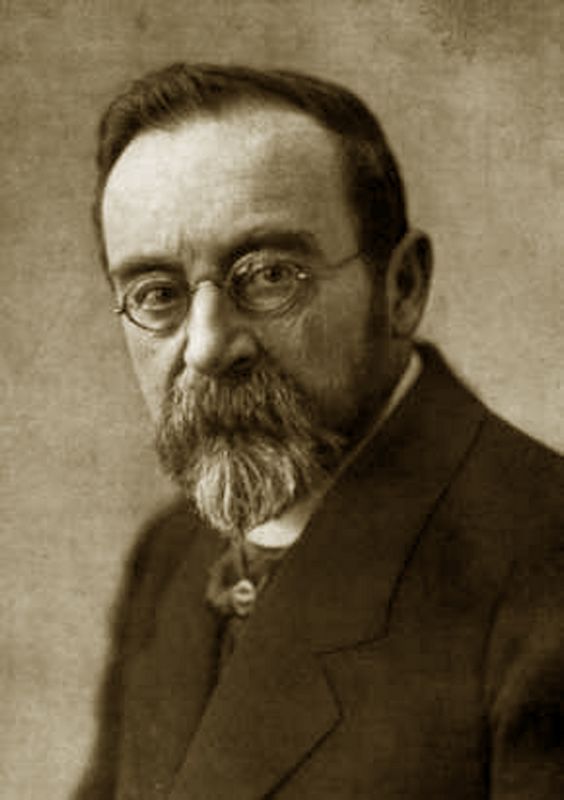|
Monuments from Egypt and Ethiopia, by Richard Lepsius. Volume I, Lower Egypt and Memphis.
(Original publication of plates 1849-1859; Explanatory text from
the 1897 German edition, edited by Kurt Sethe and Eduard Naville).
Introduction
PREFACE FROM THE PUBLISHER, by Edouard Naville (p.v.)
Half
a century has passed since the scholar who could even then be called
the renovator of Egyptian studies, Richard Lepsius, returned to Berlin
after more than three years in Egypt, from where he brought back
considerable scientific treasure. During these fifty years many
disciples have arisen; Egyptology which, originally, seemed to be the
monopoly of a few minds curious about new discoveries in philology and
history, has recruited numerous adherents in almost all countries: the
science has developed so widely and has grown so much, so quickly that
we are sometimes inclined to forget the difficulties that the first
pioneers who cleared this vast and mysterious domain had to overcome.
Because on many points they have been surpassed, we are inclined not to
give their works the importance they had at the time they appeared.
Where we go back to the early days of Egyptology, in 1822 the genius of
Champollion opened the door that had been closed for nearly fifteen
hundred years. But when ten years later the pen had fallen from his
dying hand, no one came to retrieve it.

Fig.1: Jean-Pierre
Champollion (1790-1832) was painted by Cogniet in 1822, the same year
that Champollion sent the French Academy the famous "Lettre a M. Dacier
relative à l'alphabet des hiéroglyphes phonetiques," announcing his
discovery of the syllabary used in Egyptian hieroglyphs.
The
result of his conscientious and close investigation is recorded in his
"Letter to Professor H. Rosellini on the hieroglyphic alphabet"
published in Rome in 1837. This work, however brief it may be. was
epochal. This is where the renaissance of Egyptological studies begins.
It
is like the crowning of the building whose walls Champollion had
raised. For the first time the master's discovery was put under the
sieve of a rigorous method. Lepsius definitively established the
principle laid down by his glorious predecessor. He corrects here,
removes what could not withstand the test of his close criticism; but
the reality of the discovery is put out of the question, and moreover
Lepsius shows the way to advance in the decipherment. He was living
proof of the goodness of his method, which soon brought him significant
success; the works he published in the years that followed marked great
progress on those of Champollion and Rosellini.
To this research
which he pursued with ardor in Paris, Turin, and Rome, there was a
necessary complement, a trip to Egypt. to the country whose language
and history he was reconstructing. He had to be able to apply his
method on site, and verify his discoveries in a wider field than that
of the museums of Europe. Thanks to the fact that his two protectors,
Bunsen and A. de Humboldt, found the most generous support with King
Frederick William IV. whose high intelligence was interested in the
studies of the young scholar, Lepsius left in the fall of 1842 at the
head of an expedition, whose personnel he had chosen himself was likely
to ensure success. Let us cite among his collaborators two of them who
appear in this publication, the young architect Erbkam, responsible
more specifically for drawing up plans and doing research and drawings
concerning architecture, and Max Weidenbach, one of the two equally
skilled brothers, one of whom copied and reproduced Egyptian
inscriptions, and his brother Ernst, an artist later attached to the Berlin Museum, drew all
the latest works of Lepsius [a].
(p.vi) Like Champollion. Lepsius
kept the scholarly world informed of the progress of his journey and of
the discoveries which marked it in his letters later collected in a
volume: "Briefe aus Aegypten, Aethiopien und der Halbinsel des Sinai" [Letters from Egypt, Ethiopia and the Sinai Peninsula,
Berlin 1852]; We follow the traveler in all the stages he made in the
Nile valley and as far as Sudan; we witness the life of the expedition
and the episodes of the journey; but what is especially interesting in
these letters is what we can call the description of the scientific
landscape, all the new facts which constantly present themselves to his
amazed eyes of these monuments as admirable as they are varied.

Fig.2:
Karl Richard Lepsius (1810-1884), at three periods of his life,
starting at left as a young researcher and university professor in the 1840s, when he
led the expedition to Egypt.
These
letters also give us an overview of all the riches that he gathered
during the three years of his journey, whether in monuments intended
for the Berlin Museum, or in drawings, casts, stampings, reproductions
of all kinds that 'he intended to publish immediately after his return.
Apart from this abundant harvest which was rather the fruit of the work
of the collaborators under his direction, there was the result of his
own work, a detailed diary which he wrote from the beginning to the end
of his journey. One of the members of the expedition, Max Weidenbach [a],
described to us one day the ardor with which, upon seeing a new
monument, Lepsius began to study it in detail, striving to understand
it. understand the plan and the destination, looking for all the
interesting particularities, and especially what related to history,
his main concern.
The results of these studies and the
description of all the monuments that he had before his eyes were
recorded in this journal which, in Lepsius's mind, was to be the main
source from which he would constantly return to draw, and which he
would use it above all for the publication of the documents that the
expedition had collected. If one thinks that the writing of this
journal came in addition to the concerns of all kinds that led to the
direction of a numerous expedition. monitoring and revising the work of
his various collaborators, one can only admire the power of work that
this supposes, and one is surprised that Lepsius was able to sustain
such intense activity for three years through the fatigue of the travel
and under the heat of the climate.
At the beginning of 1846 he
was back in Berlin where he had preceded the collection of monuments he
had found in his excavations, and the enormous harvest of drawings and
stampings he had collected on the banks of the Nile. He immediately set
about publishing his riches. King Frederic William IV., delighted with
the success of the enterprise due to his royal generosity, immediately
granted a sum for the publication, the form and appearance of which he
prescribed. It was according to the formal desire expressed by His
Majesty that the "Denkmaler aus Aegypten und Nubien" [Monuments from Egypt and Nubia] became
a luxury work of an exceptionally large format, and which was to become
epochal. both by the beauty of the execution and by the value of the
content. In 1856 the final delivery and the last of the 894 plates
appeared. Lepsius had monitored the publication very closely down to
the smallest details, and although we do not have the work of his hand,
the conception of the book. the plan adopted belongs entirely to him.
The chronological order on which it is based is consistent with the
solutions he had given to several doubtful questions in the series of
Egyptian dynasties.
Most of the works of Lepsius which appeared either during the publication of Denkmaler
or after, touch in some way on this great work, or are based on
documents contained therein. Lepsius considered these works as
preliminary comments intended to shed light on this or that part of the
explanatory text. He announced this text in 1849 when the first plates
appeared. It was to have an approximate capacity of 80 to 100 sheets in
4to to which additional plates of the same format would be added. For
the first part of Denkmaler it would include a geographical description of all the localities in Egypt where monuments were located.
For
the following parts the author restricted his framework and made his
reservations in advance: "The purpose of the explanation of the
remaining sections is by no means an exhaustive antiquarian treatment
of the depictions given, nor a complete translation of the
inscriptions. Every expert knows that for the most part this is not yet
possible, and that a philological-critical explanation of even that
part of the inscriptions. which already allowed such a thing, but could
only be delivered in many volumes and with the help of extensive and
very specific investigations." And he continues by saying that we must
limit ourselves for the moment to perfectly certain explanations and to
the clear and correct publication of the texts by highlighting what
they present that is remarkable.
(p.vii) Although he had reduced
it to these modest proportions, Lepsius never decided to write down
this explanatory text, and for those who have known him closely this is
not surprising. He had conceived it in an ideal form that was too lofty
and too ambitious. Let us not forget that then we were still very far
from the point that science has reached today. In terms of translation
we only tried to interpret pieces of a certain extent and no longer
fragments of sentences. Anyone who at this time would have undertaken
to write a text to the Denkmaler
saw a host of questions arise before him, some of which have not yet
been resolved. and before which he should have stopped otherwise he
would only give hypothetical or poorly established solutions. These
conditions displeased the methodical and precise mind of Lepsius. As
much as he liked to take a circumscribed subject and explore it
thoroughly, taking advantage of all the resources that could shed light
on the obscure points, he also felt reluctant to undertake a task that
was too vast, poorly defined, and where by the force of circumstances
he would have had to leave a lot of vagueness, and a lot of obscurities
that it was not possible for him to dissipate.
He could not be
satisfied with a text which necessarily could only be an outline, only
an essay, and which would not get to the bottom of the questions. This
enterprise, before which he hesitated at the beginning, became more
difficult from year to year. As Egyptology took off in France, England
and Germany, a considerable number of works arose which had to be taken
into account; the ideal that Lepsius had formed was increasingly less
easy to realize; so it soon became ever more probable that this text
would not appear; and when the weight of years, aggravated by family
trials, made itself felt on his robust constitution, he had to give it
up entirely. On July 10, 1884, Lepsius left this world without even
having begun the writing of this text which seemed to be the great work
of his life; he took with him a whole treasure of knowledge and
information which should have appeared in the work and which was not
made public anywhere.
But there remained of him what in his
intentions should have been the basis of this explanatory text: his
diary. Shortly before his death, Lepsius had given the author of these
lines the greatest mark of confidence that the student could receive
from the master who had directed with benevolent interest his
beginnings in the science of Egyptology. He had recommended to his
children to give me all of his notes and manuscripts, knowing that I
would only use them with the feelings of respect and recognition that
our past relationships had engendered in me. I therefore had Lepsius's
diary in my hand for a little over a year.
In 1886, at the
request of the Minister of Public Education of the Kingdom of Prussia,
and in agreement with the family of the deceased, it was decided that
the journal would be sent to the Berlin Library, where it has since
been deposited as property of the State, use being granted to scholars
who would like to consult it, but the right of publication being
reserved for the moment, in accordance with the last wishes of the
deceased. To this journal was later added Max Weidenbach's sketchbook
which I returned to the Library under the same conditions.

Fig.3:
Kurt Sethe (1869-1934) in 1918. Sethe, a student of Adolph Erman and a
Berlin Egyptologist, made numerous breakthroughs in the grammar of
ancient Egyptian and remains a chief authority on that language
Before
getting to work it was necessary to fix a point much discussed today
among Egyptologists, that of the transcription of hieroglyphs. Due to
the progress that has been made in deciphering, it has happened that
Lepsius during his career sometimes gave different readings of the same
sign. The question of transcription had preoccupied him on several
occasions, particularly when he wrote his memoir on the "Standard
Alphabet" (1855—1863), and later at the Congress of Orientalists in
London, in 1874. On the latter occasion , he proposed a system of
transcription that he wanted to see generally adopted, to which he was
very attached and which he applied throughout the time he was busy
editing the Zeitschrift. I
did not believe that we had the right to deviate from this system when
it came to publishing his journal. Knowing (p.viii) Lepsius' opinion
on this point, and the attachment he had for its transcription, it was
my duty to respect what was the result of his latest research, and not
to introduce any foreign element.
If there were corrections to
be made, it seemed to me that it was necessary to correct Lepsius
himself, and this is why we will find in these volumes the
transcription and the readings that he had adopted in the last years of
his life and particularly since 1874. Once this publication is
completed, it will be possible to make a definitive judgment on who
Lepsius was, on the extent of his activity, on the importance of his
work, and on everything of which he Egyptology is indebted to him. We
will recognize here, I am certain, what characterizes his other works,
the certainty in the method and the clarity in the exhibition.We will also discover what we were perhaps less
inclined to attribute to him, the intuition of the right solution in
many doubtful problems; and we will be surprised to see that more than
one discovery due to one of his successors, and which is perhaps even
considered as a very recent novelty, he had, if not made, at least
glimpsed. I am happy to think that this work will be an effective means
of making the great qualities of the one I had the privilege of having
as a master better known and more highly appreciated. And that it will
thus be the truest tribute and the most lasting that we can restore to
his memory.
Malagny near Geneve. June 1896.
EDOUARD NAVILLE.
Fig.4:
Edouard Naville (1844-1926) in 1917. Naville, a Swiss
archaeologist who was a student of Lepsius, conducted many pioneering excavations of sites in Egypt,
often published in Memoirs of the Egypt Exploration Account led by W.M. Flinders Petrie.
PRELIMINARY NOTE by Adolph Erman. (p.ix)
When
the expedition sent by His Majesty King Friedrich Wilhelm IV to Egypt
returned in 1846, the Most High Majesty made it possible for the
head of the company, Richard Lepsius, to present the results obtained
in the large work of illustrated tables of Monuments from Egypt and Ethiopia [Denkmaler aus Agypten und Athiopian, afterwards abbbreviated here as DM],
which appeared between 1849 and 1859. As is clear from the announcement
of the work published in 1849, it was foreseen from the outset that
these plates would also be accompanied by an explanatory text and that
those drawings and inscriptions not included in the main work were to
be published in a supplementary volume in a smaller format. However,
both plans did not come to fruition. When, with Lepsius' death, the
possibility that he himself would publish this text and this
supplementary volume again disappeared, the plan was made to replace
these missing parts of the large work, to be completed based on the
materials left behind by the expedition. The following were available:
1. the copies and drawings of the expedition in the possession of the Royal Museums;
2.
the diaries and notebooks of Lepsius, which he
bequeathed to Mr. Edouard Naville in Geneva with his scientific estate;
3. the sketchbooks of Erbkam, who was involved in the expedition, in the possession of Miss Elisabeth Erbkam;
4. the sketchbook of Mr. Max Weidenbach, also owned by Mr. Naville in Geneva;
5.
Lepsius' copy of Rosellini's work, improved by him based on the
monuments on site. Owned by Mr. Heinrich Schaffer in Frankfurt on Main.
6. the list of antiquities, copies and drawings collected by the expedition. Owned by the Royal Museums.
All
of these materials were kindly provided by the relevant owners and sent
to Berlin. The publication of the work was carried out by Mr. Edouard
Naville (fig.4), who, according to a will of Privy Councilor Lepsius, is
entitled to publish his scientific legacy. The preparation was given to
Dr. Sethe (fig.3), who was assisted by government architect Borchardt for the
architectural sections; most of the sketches in the text are owed to
the latter.
The guidelines for the preparation of the volume of text
were already given by the principles laid down by Lepsius for his time:
no explaining of the representations and no transferring or commenting
on the inscriptions, but the text should tell every user of the tablets
“what he has in front of him, where It is taken from it and what else
initially turns out to be remarkable." Given the care with which
Lepsius recorded his observations, it was possible to compile the text
almost entirely from his diaries without changing the wording; of
course, different ones were included a monument regarding notes worked
together.
Wherever there was a need to deviate significantly from the
text of the diary, these changes were always marked, and all additions
that were added to make it easier to understand are in square brackets
[ ] .
Of the inscriptions (p.x) contained in the diaries, only
what was not yet published in the tablet volumes or published
differently was included; Here too, deviations that turned out to be
incorrect when comparing the copies were not taken into account. — A
revision of all the inscriptions on the volumes of plates was not
within the scope of the task. [2]
The arrangement of the text
could only be geographical; Following the system followed by Lepsius in
the volumes of tables, the sequence from north to south was observed
for the main area of the expedition. Monuments located outside Egypt
and Ethiopia, which are mentioned in the expedition diaries, will be
listed at the end. A chronological arrangement of the individual
monuments discussed could of course not be consistent with this system;
The small difficulty that may arise for a user of the table book will
be remedied by the concordance included at the end of the work.
At
the top of each page (fig.1), the manuscript sources used on it are
indicated in the following abbreviations, which are also used elsewhere
in the text:
"Fol." Lepsius' diary, folio volume (I—III);
"4"." same, fourth band (I—VI);
"12"." Lepsius' notebooks (I—X);
“Inv.
V." Inventory V of the Berlin Museum, the list of antiquities collected
by the expedition. (The lists of drawings and copies included in the
same volume are specially cited.)
"B." Berlin Museum, inventory number;
"Z." Drawing (the red order numbers of the drawings are quoted, not the black ones that refer to the "Inventory V")
"A." Paper print') (the lists in the "Inv. V" are quoted); [3]
"G." Plaster cast in the Berlin Museum (inventory numbers);
“M. W." Max Weidenbach's sketchbook;
“Erbk.Sk. B." Erbkam's sketchbook (two volumes 4to).

Since
it was necessary to observe a fixed procedure in the naming and dating
of kings, the system observed by Lepsius in the tablet volumes was used
throughout, which corresponds to the system he set up in the King's
Book. Noteworthy diary deviations from this system have always been
noted in the notes. For reasons that he himself explained in his
preface, at Mr. Naville's request, the type of paraphrase later
established by Lepsius was carried out instead of the slanting method
of the diaries. Of course, the architectural sketches also had to be
given a somewhat smoother appearance than they have in the fleeting
originals; Erbkam's sketchbooks offered significant help in this
regard. Where no scale is given next to a sketch, it is made in an
approximate ratio of 1: 200.

Adolf Erman
Fig.6:
Adolf Erman (1854-1937) was professor of Egyptology at the University
of Berlin, and for several decades led successful efforts to
reconstruct the ancient Egyptian language. His students included James
Breasted of the University of Chicago, as well as Kurt Sethe.
Footnotes:
1. All comments come from the editors. — References to other
publications by the same monumental painters have been added, as far as
it seemed desirable, without the aim being bibliographical completeness.
2.
In order to make it easier to check the inscriptions and illustrations,
the material available for this purpose will be listed in detail in the
concordance that concludes the work.
3. Since the paper
impressions are often compressed today, the readings based
on these should be used with caution unless the impression
is expressly described as good.
a.
Max Weidenbach (1823-1890), trained to copy hieroglyphs, at age 19
joined the three year expedition to Egypt along with his brother Ernst,
an artist. In addition to his sketchbook, utilized in the present work,
Max kept a diary which only in 2013 was rediscovered with his family
papers in Australia.
[Continue to next part]
[Return to Table of Contents]
|
v |